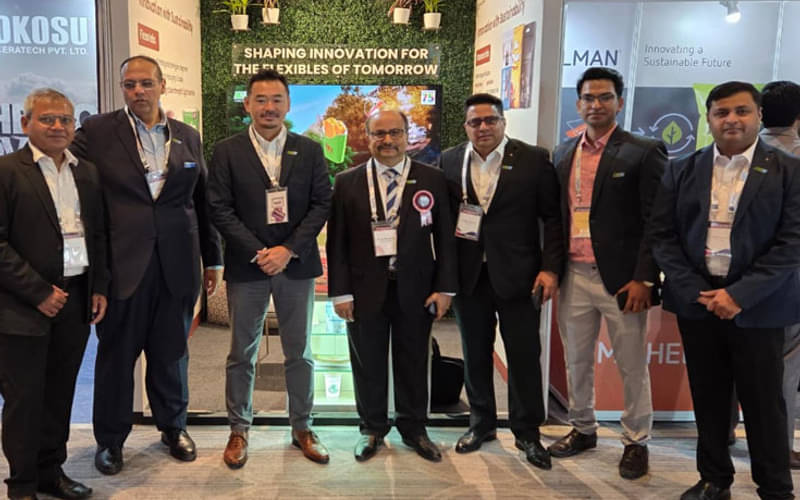Revolutionising packaging: DIC's de-inking technology and sustainable solutions for India
At the ElitePlus Summit, team WhatPackaging? spoke to Hayato Kashiwagi, regional business product director, DIC Asia Pacific and Utsab Choudhuri, deputy regional technical director, packaging and graphic business, DIC Asia Pacific
11 Sep 2025 | By Jiya Somaiya
Hayato Kashiwagi observed a challenge in the ink industry, “Our customers, who are converters and brand owners, want to be sustainable at the lowest cost,” he said.
Another challenge is related to the term ‘sustainability.’ Kashiwagi remarked, “Sustainability is a broad word; each customer’s requirement is very different from one another.” He added, “One customer could be looking into reducing carbon footprint, whereas another customer would be looking into biodegradable or downgauging monomaterial for recyclability.” Kashiwagi observed that as sustainability solution providers, “We need to be able to cater to all the packaging requirements.”
Kashiwagi shared that at DIC, the emphasis is on research and development for sustainable solutions that can cater to all customers’ needs and requirements.
One of the key focus areas at the summit was recyclability. He remarked, “De-inking is one of the technologies.” He added, “You take the ink off the film so you get cleaner recyclates. And that is an area in which DIC has already commercialised a product.”
Utsab Choudhuri, deputy regional technical director, packaging and graphic business, DIC Asia Pacific, added, “In India, we have already taken a trial with a major beverage brand for their mango range of drinks” for successful de-inking.
Choudhuri said post-pilot, the de-inking technique will extend to other partners in India. In addition, Choudhuri highlighted two solutions that DIC provides. The first solution includes a primer and regular ink; after de-inking, the film will remain virgin. He observed, “So, instead of 30-40%, you can use 90% as a fresh material.”
The second solution features a directly washable ink. The two ink solutions will be duplicated for the Asian market through Sun Chemical’s SolvaWash. He remarked, “In terms of mono material, we are working on an areobloc solution.” This solution will reduce the OTR value and increase the shelf-life. He continued, “We also provide barrier adhesives for laminates, which reduce the OTR value.”
Choudhuri spoke about addressing challenges with de-inking for laminations, “It is a big challenge to remove ink for laminates.” DIC is addressing this by working with adhesives for the removal of inks, resulting in the separation of films from the ink. According to him, this technology will take two to three months to pilot in India.
Choudhuri remarked, “As stated by DIC’s group policy, for the last 30 years, none of our products contain a single heavy metal component.”
Witnessing the positive energy and momentum at the ElitePlus Summit, Kashiwagi said, “This is something that encourages us to continue our business in India. And we hope to continue to grow our business here.” He continued, “It has been four to five years since I was in India, but the technological advancements have been very significant over the past few years. The speed of machines is very fast now.” He added, “Compared to other Asian countries, the printing presses are high-speed. The effort towards sustainability has increased quite significantly.”
Currently, DIC is investing in sustainable products and focusing on developments in direct food contact coatings. Kashiwagi remarked, “Considering the shift from plastic to paper packaging for food packaging, we would like to replace that with our direct food contact coatings.” He added, “We have added a manufacturing site in our factory in Indonesia.”
Kashiwagi noted that there has been an expansion in India’s middle-class consumption, resulting in a boom in the manufacturing and production of FMCG goods, which is a tremendous positive.


